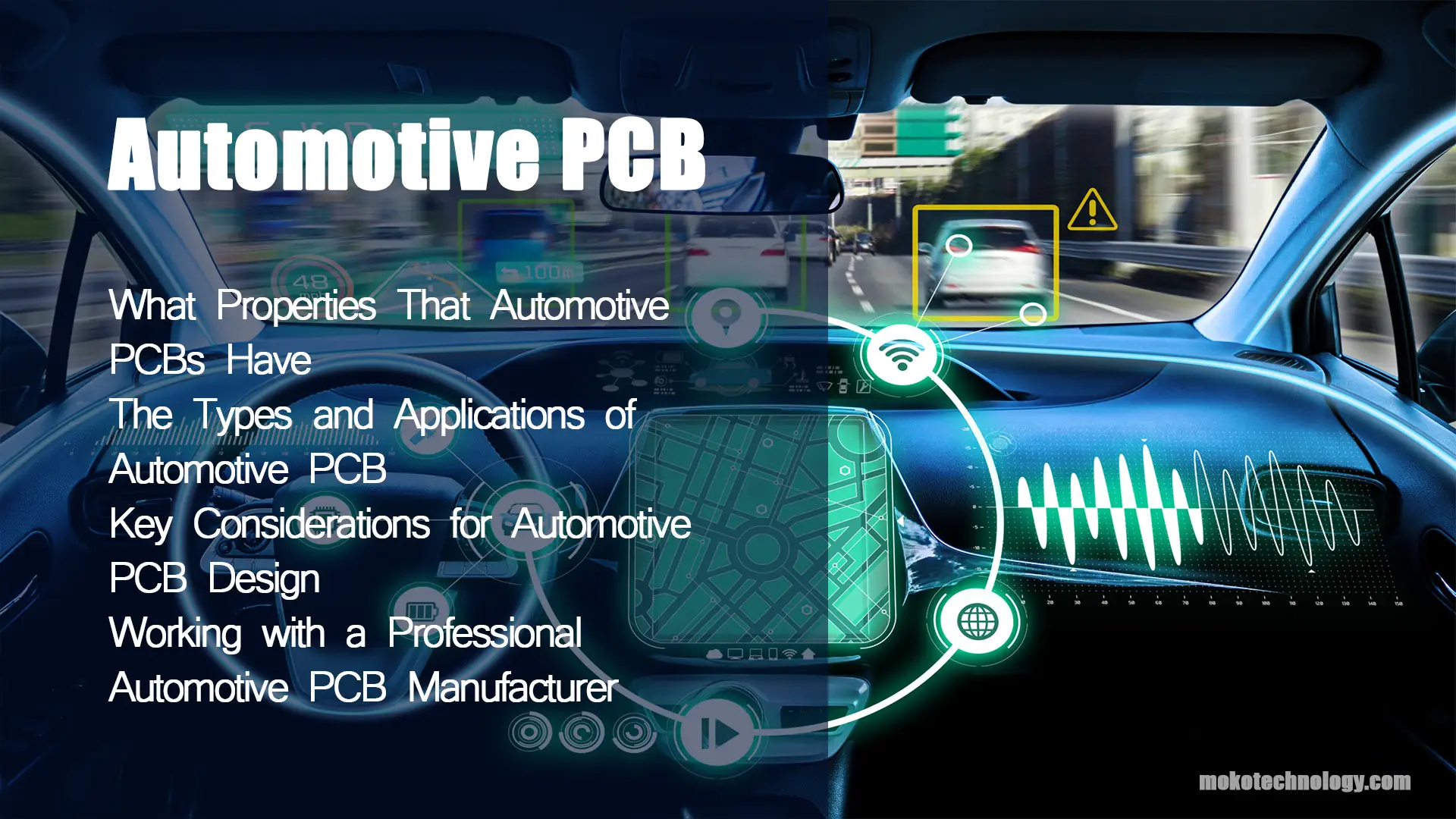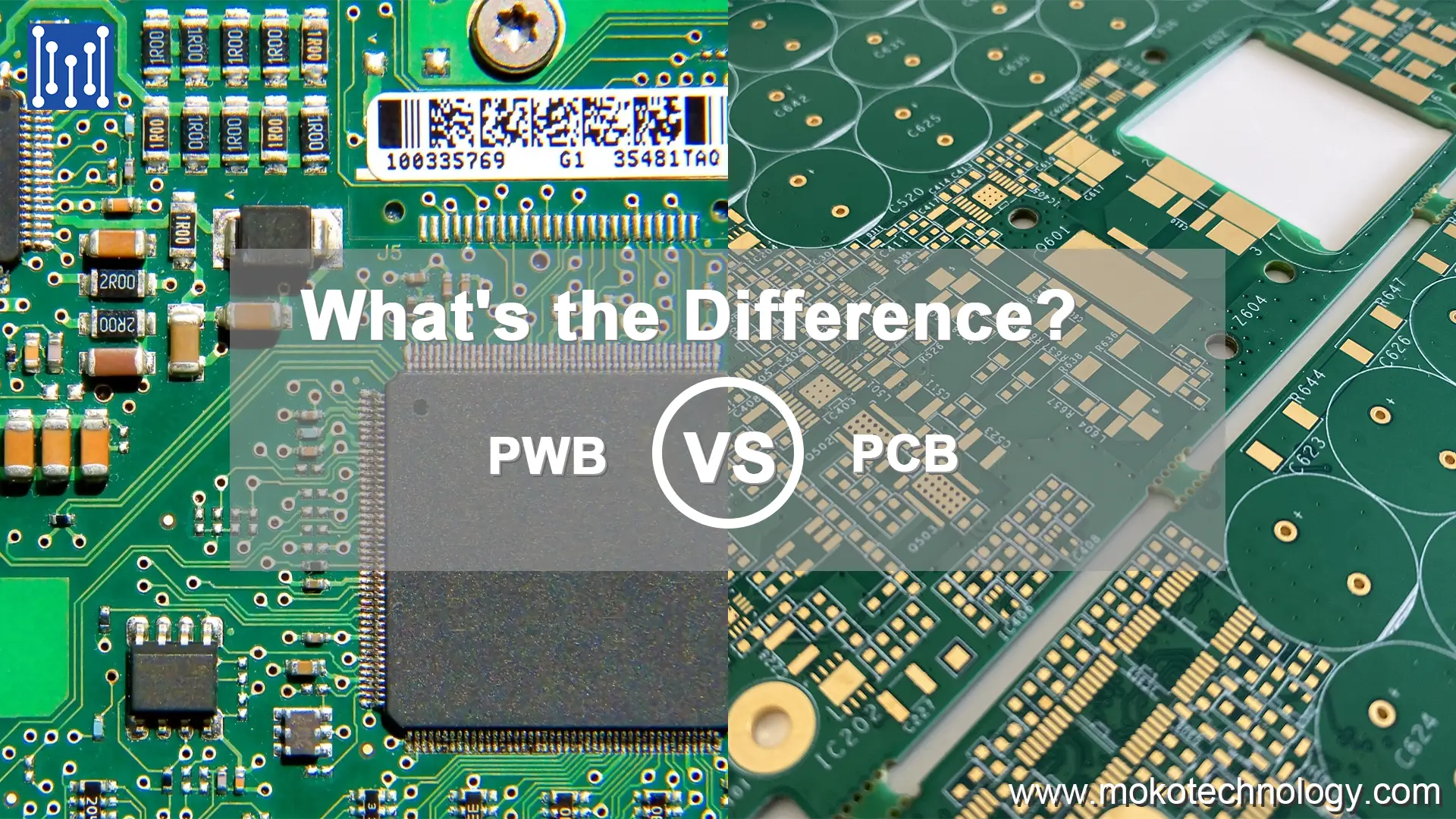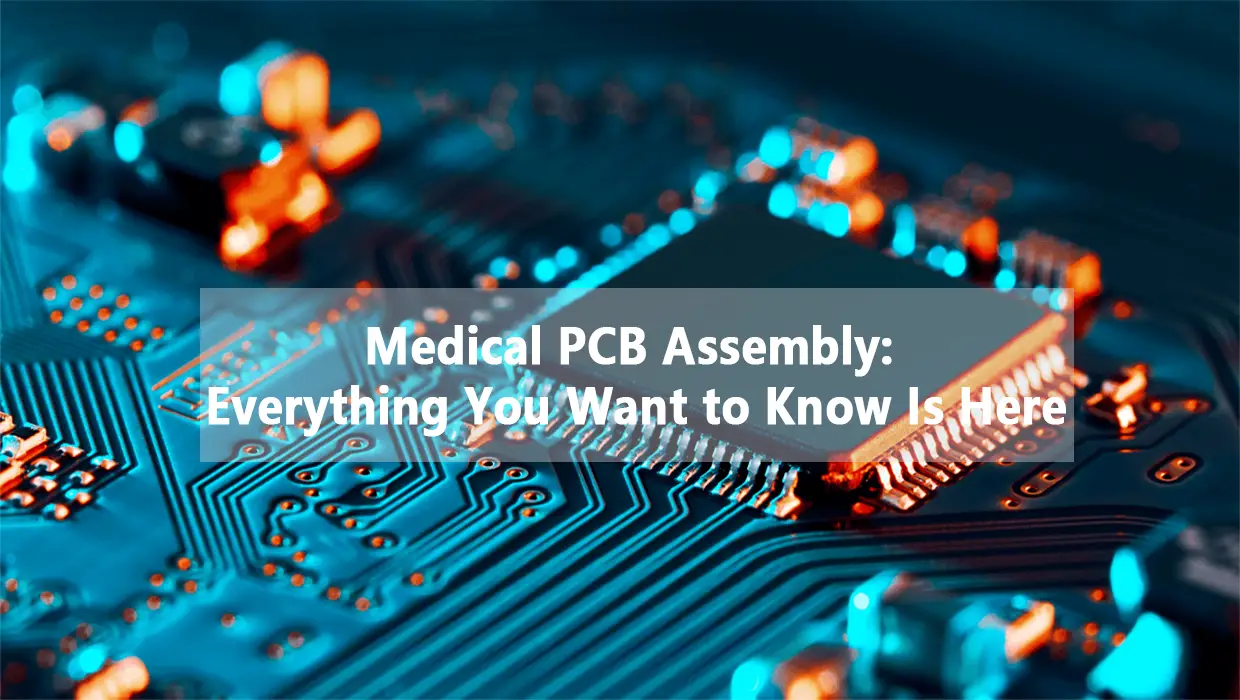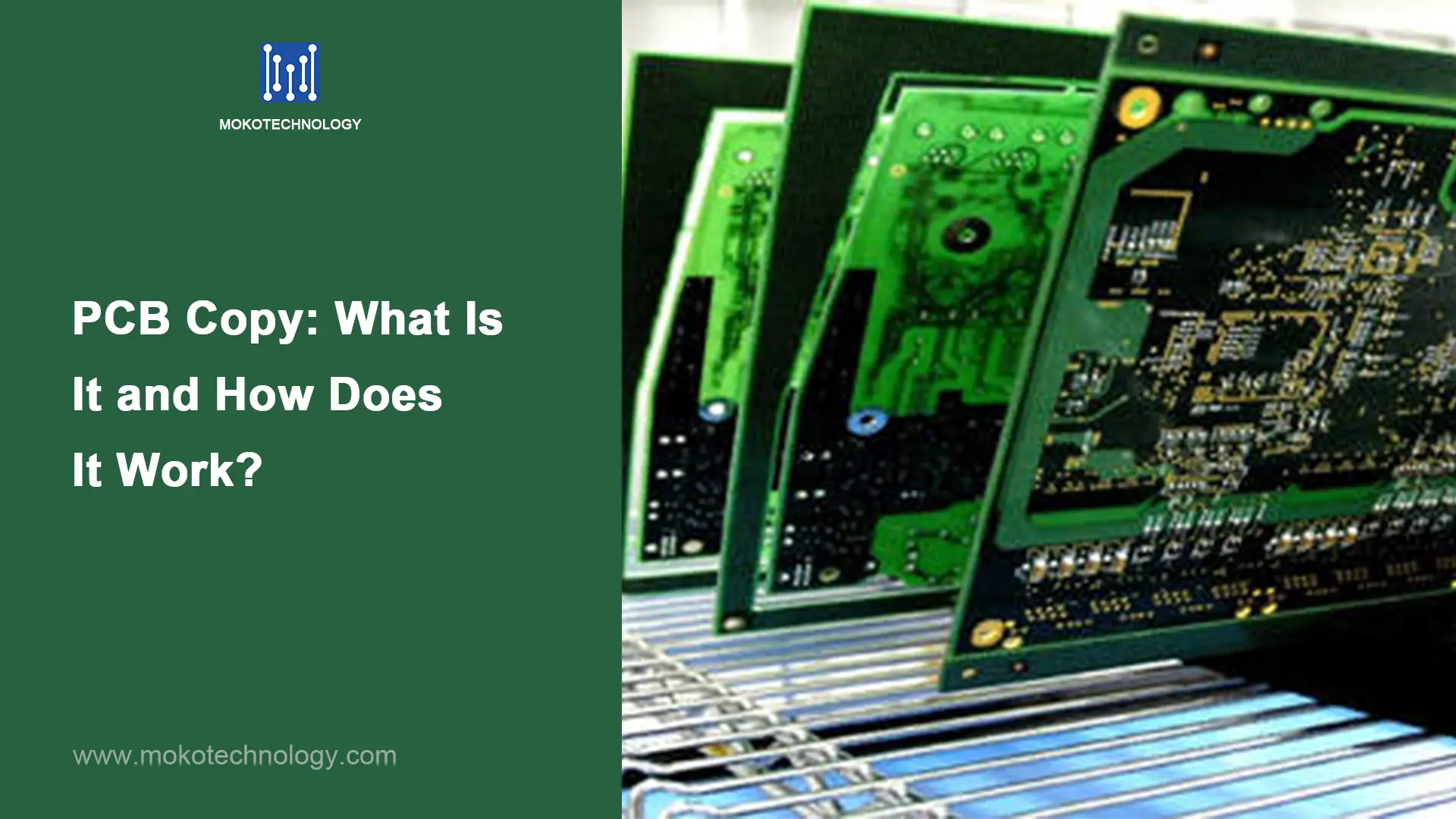Automotive PCBs are critical components that are used for kinds of automotive electronic systems, including sensor systems, engine controls, GPS, security systems, digital display, and LED lighting. As electric and hybrid vehicles become more and more popular. There is a growing demand for automotive PCBs that must have high reliability, durability, and high quality to ensure safe driving. In fact, automotive PCB can not only improve vehicle performance and operational safety but also bring a better driving experience. Therefore, they must be carefully designed and manufactured to ensure they can achieve performance goals and high industry standards.
What Properties That Automotive PCBs Have
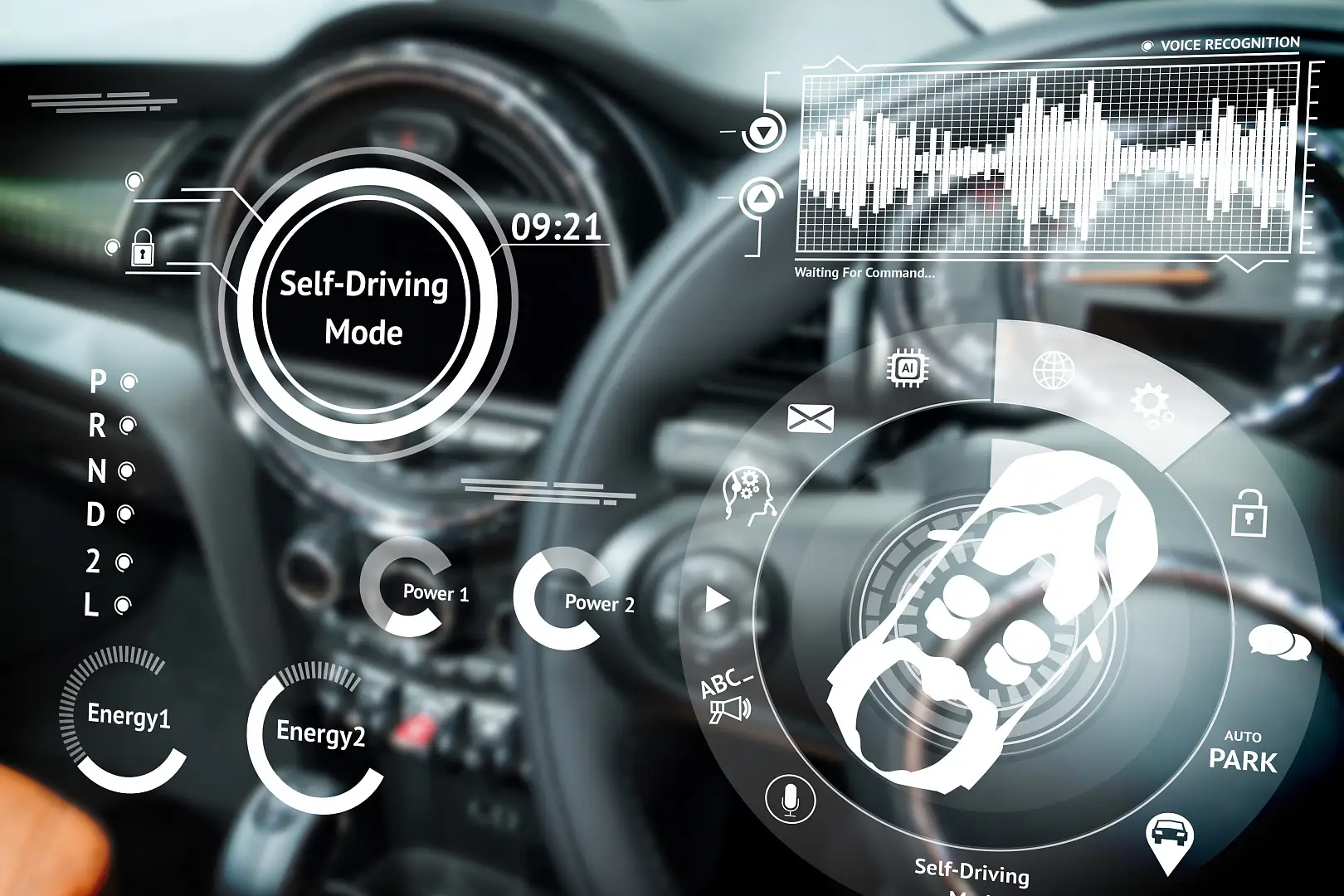
Unlike traditional PCBs, PCBs used in automobiles have many properties that aid their operation, let us discuss them one by one:
- Workable for complex systems in the automotive industry
An automotive contains a variety of complex systems that must deal with different challenges, including extreme temperatures and external disturbances. Therefore, automotive PCBs need features that can withstand these extreme conditions to reduce disturbances during operation.
- Adapt to large temperature fluctuations
In automotive systems, there will be large temperature fluctuations, so PCBs used in automobiles must have characteristics that can withstand such large temperature fluctuations.
- Resistant to chemical corrosion
The electronic system of the vehicle needs to face the threat of various chemical corrosion such as corrosive acid, organic solvent, salt water, etc. Therefore, the automotive PCB must have the ability to resist corrosion, thereby prolonging the service life of the car.
- High reliability
PCBs used in automobiles must have high reliability, because this is related to the safety of operation and even the safety of life. Usually, car circuit boards are made of very strong materials with stable performance and can operate normally in harsh environments.
- Adaptable to different environments
Vehicles are sold all over the world, and different regions usually have different environmental characteristics such as different temperatures and humidity. So automotive printed circuit boards
must be adaptable to different environments, though some manufacturers will fabricate PCBs for specific environments.
- Resistant to dirt
Accumulation of dirt in the electronic systems can result in many problems such as short circuits and finally affect the operation of vehicles. Hence, it is vital to make sure that automotive PCBs can resist the accumulation of dirt. Normally, car PCB manufacturers use special laminates to keep dirt off circuit boards, so we can use such PCBs even in dusty environments.
Different Types of Automotive PCB
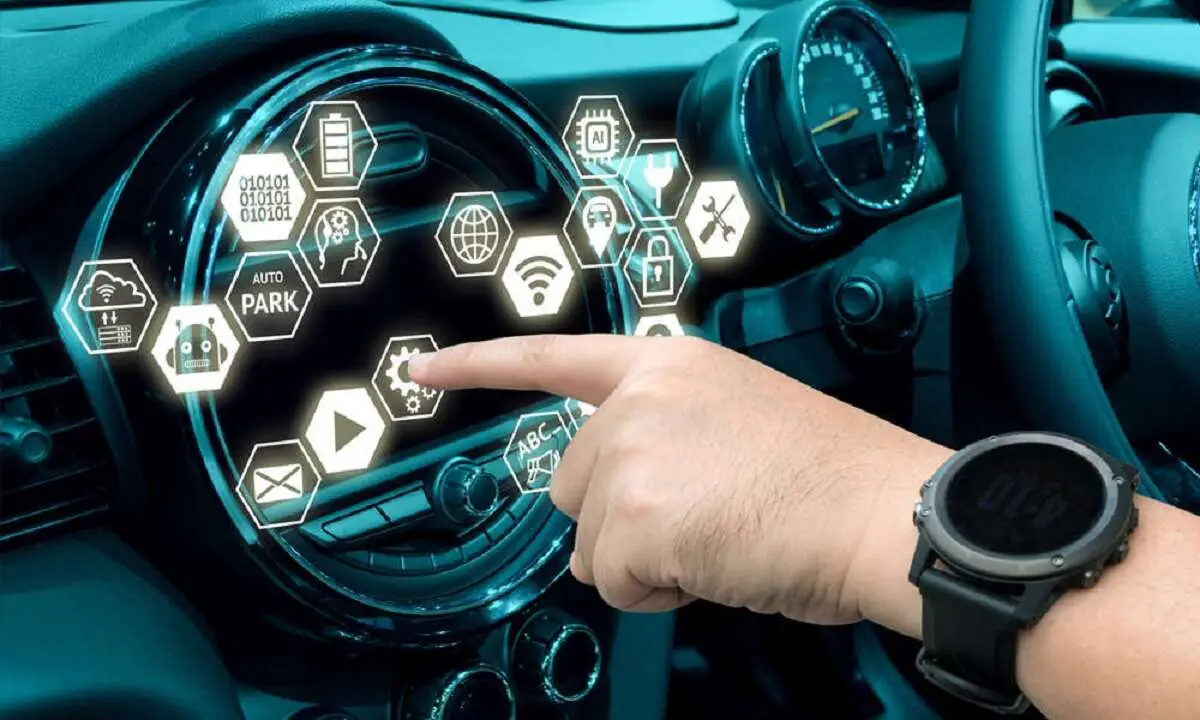
There are 6 types of printed circuit boards that are widely used in the automotive industry:
Ceramic PCB: The core of ceramic-substrate circuit boards is made of aluminum nitride or alumina. It has features with great thermal conductivity and high-temperature resistance.
HDI PCB: Compared to traditional circuit boards, HDI PCB has a higher wiring density. It contains blind/buried microvias, and the minimum space of HDI PCBs used for automobiles is about 75μm/75μm or smaller.
High-frequency PCB: High-frequency PCBs are commonly used in car collision avoidance or predictive emergency braking systems, which rely on the PCB to transmit microwave high-frequency signals. While PTFE or hybrid ceramics are perfect choices for high frequency PCB materials, they feature low dielectric loss and can be used as high frequency wave transmitters and receivers.
Flexible PCB: This kind of circuit board has the advantage of foldability. It is estimated that there are more than 100 flexible PCBs are used in an automobile, in addition, it becomes a trend to use flexible PCBs to replace the harnesses.
Rigid-flex PCB: Rigid-flex PCBs are much popular in the automotive industry, and widely used in automotive LED lighting systems. They combine the advantages of rigid PCB and flexible PCB and reduce solder joints and connectors.
Metal substrate PCB: The substrate of metal PCB is normally made of aluminum or copper. Compare to traditional PCBs like FR4 PCB, it has better thermal conductivity.
PCB Applications in Automotive
We can find automotive PCBs almost everywhere in a car, below we have listed some common applications, let’s dive in…
- GPS Systems
Modern cars are basically equipped with GPS navigation systems. By using it, we can travel freely in the streets and alleys and arrive at the destination accurately even in an unfamiliar city, and this very useful and widely used system is driven by automotive PCBs.
- Control and Information Systems
The intelligent control and monitoring system on the car also uses a large number of complex PCBs to transmit fuel reserve, brake light, and speed light information to the instrument panel, so that the driver can operate better and safer.
- Near Field Monitors
Near-field monitors can reduce blind spots for drivers and help drivers to control their vehicles better, they can reverse and park more easily. And all near-field monitors use automotive printed circuit boards to transmit the signal.
- Audio/video equipment
Today’s cars are given more functions, most of them are equipped with audio and video equipment, and the core of the operation of such equipment is PCB. Audio and video equipment can provide drivers with a better driving experience, for example, they can listen to music while driving.
- LED Lighting System
For automobiles, LED lights can not only provide lighting functions but also can create different styles of the vehicle and add personality. LED lights are featured with a longer lifespan and lighting efficiency, and PCBs play a critical role in their operation.
Key Considerations for Automotive PCB Design

Due to high industry standards and the special application environments, we must take automotive PCB designs seriously to make sure that they can perform as expected. In this part, we have listed a few factors that should be considered when designing an automotive PCB, so let’s read on.
The inductance will be generated when two inductors or two PCB wires come close to each other. By designing a compact circuit layout and reducing the coupling balance, we can achieve optimal placement of all inductors in the circuit. And there are 2 basic rules to follow when designing automotive printed circuit boards: First, the spaces between the inductors should be designed as large as possible; second, we need to design the inductor alignment at right angles that can minimize the inductor crosstalk.
- Lead Coupling
Mutual inductance occurs and affects coupling when leads are placed close. In this case, the return current path should be designed as close as possible to the main current path, while reducing the radiated field to reduce the current loop area. Considering the integrated ground under the leads whenever possible during the design process can improve the performance of automotive printed circuit boards.
- Grounding thru-hole
In terms of grounding thru-hole, when designing the circuit layout of an automotive PCB, we should notice that thinner PCB copper will reduce the effect of parasitic inductance of the via, and vias in sensitive areas should establish inductance module.
- Grounding and Filling
Grounding and filling are important aspects of automotive PCB design, and proper design can avoid impedance issues in the circuit. During the design process, the following points must be considered: First, it is necessary to provide a continuous ground area with very low impedance. Second, the filler wire terminals and via arrays need to be connected to ground. Finally, ground the copper clad wire.
- Signal Integrity
Proper routing of signals on the PCB is crucial for signal integrity in automotive applications. Use controlled impedance traces, minimizing trace lengths, differential signaling, isolating analog/digital signals, and proper ground planes. This prevents reflections, interference and maintains signal quality.
- Thermal Management
Effective thermal management is crucial as automotive PCBs often handle high power levels. Conduct thermal analysis to pinpoint hot spots, and implement solutions like copper heat sinking planes, thermal adhesives, strategic component placement, and heat dissipation vias. This enables heat to spread and avoid localized build-up that degrades components.
- Meeting Automotive Design Standards
Compliance with automotive design standards is imperative to ensure safety, dependability, and conformity with regulations. Familiarize yourself with relevant standards like:
ISO 26262: Functional safety standard for electrical and electronic systems.
EMC Standards: Regulations related to electromagnetic compatibility (e.g., CISPR 25 and ISO 11452).
Automotive Environmental Standards: Standards governing environmental factors, including temperature, humidity, and vibration (e.g., ISO 16750).
- Optimize RF circuit
Automotive wireless functionality relies on optimizing RF PCB performance through controlled impedance dimensions, short trace lengths, shielding, proper components, and matched interfaces. Extensive modeling, prototyping and tuning will align the RF circuits to meet the demanding wireless needs of the vehicle.
Working with a Professional Automotive PCB Manufacturer
If you lack professional PCB design and manufacturing knowledge, we suggest you look for a professional automotive PCB manufacturer and seek help from them. They have relevant expertise and project experience to ensure reliable automotive PCB quality. As a top PCB manufacturer in China, MOKO has rich experience in automotive PCB production and assembly. We provide a variety of automotive PCBs including HDI PCBs, flex-rigid PCBs, flexible PCBs, metal core PCBs, etc. PCBs used in automobiles must be manufactured and assembled to the highest standards in order to guarantee their safety and reliability. Therefore, we strictly control the quality, and all PCBs undergo 100% quality inspection. Our engineers are experts in automotive PCB. They will understand your project needs in detail and customize the optimal design for you. If you are looking for a supplier of automotive PCB manufacturing and assembly, please contact us. We will provide you with high-quality automotive PCBs in the shortest turnaround time.
